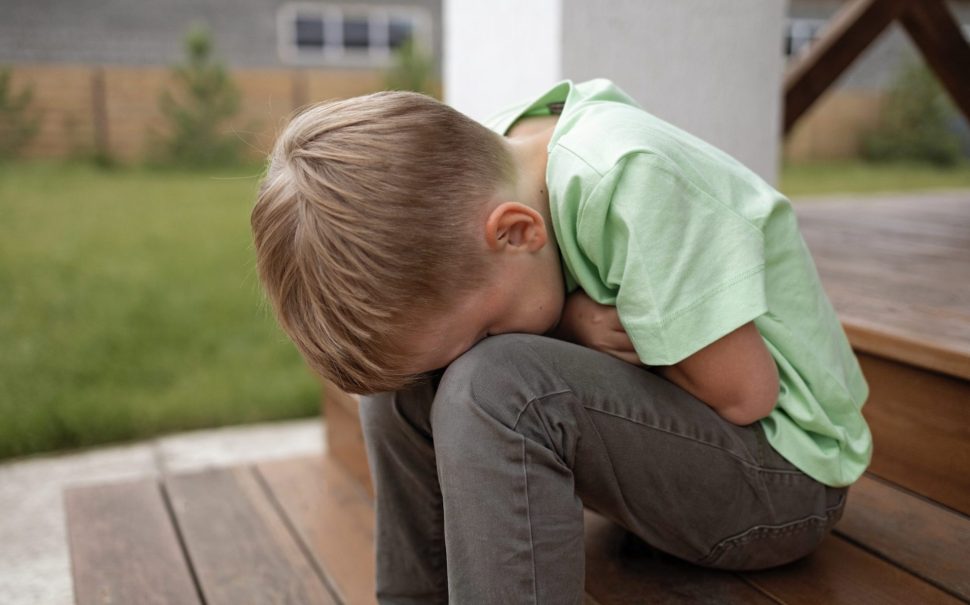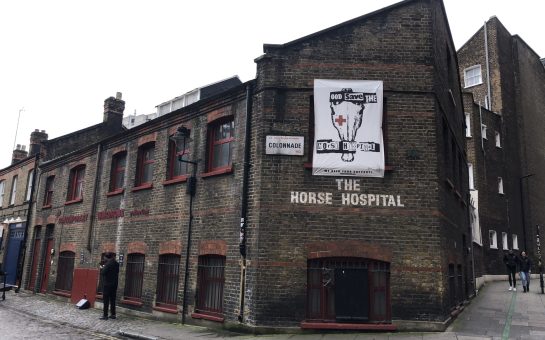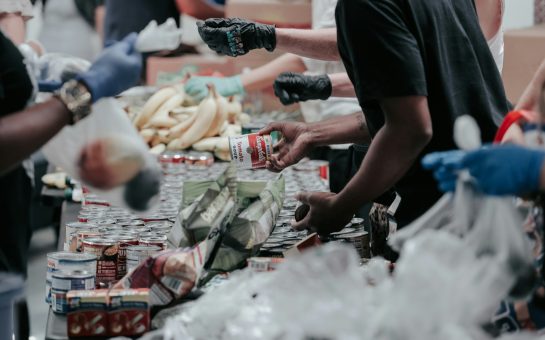The number of children impacted by the two-child limit to benefit payments across the UK has significantly increased in the past few years, leading to higher child poverty rates, new data shows.
Figures published by the End Child Poverty Coalition show that in April 2023 there were 1.5 million children affected by the two-child limit across the UK – compared to between 1.1 and 1.2 million in April 2021 – including more than 230,000 in London.
The two-child limit to benefit payments was implemented by the Conservatives in 2017 and means families can only receive certain benefits – including the Child Tax Credit and the Universal Credit – for their first two children, resulting in larger families being more likely to experience relative poverty.
End Child Poverty Coalition Coordinator Rachel Walters said: “Policies like the two-child limit punish parents with children and do not in any way allow them to receive the right amount of money for what they need for their children.
“So it’s policies like that, within the benefit system, that are really pushing families into poverty.
“Scrapping the policy now would lift 250,000 children out of poverty immediately and 850,000 children would be in less deep poverty.
“It’s a very simple solution if, as a government, you really wanted to change your statistics overnight.”
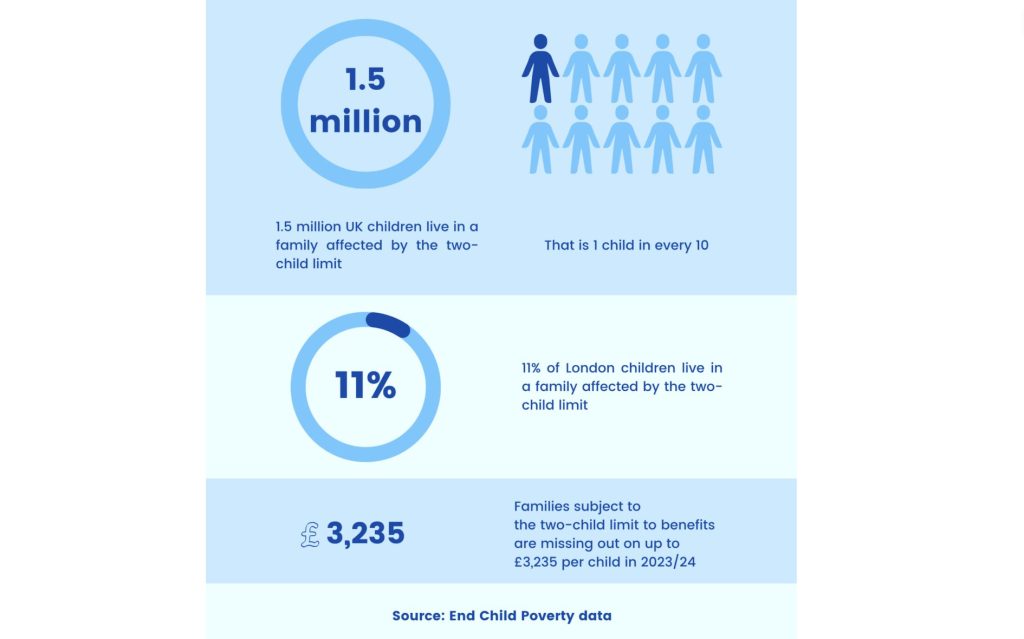
The two-child limit policy is one of the factors which influence child poverty the most, alongside ethnicity, single-parenting and whether a child lives in an area where costs of housing and childcare are high such as London.
Data from the Child Poverty Action Group shows that 350,000 more children were pushed into relative poverty in 2021/2022, meaning that 4.2 million children (i.e. 29% of all UK children) were in poverty – compared to 3.6 million in 2010/11.
Charities partly attribute this increase to the two-child limit which, according to End Child Poverty figures, makes families subject to this policy miss out on up to £3,235 per child in 2023/24.
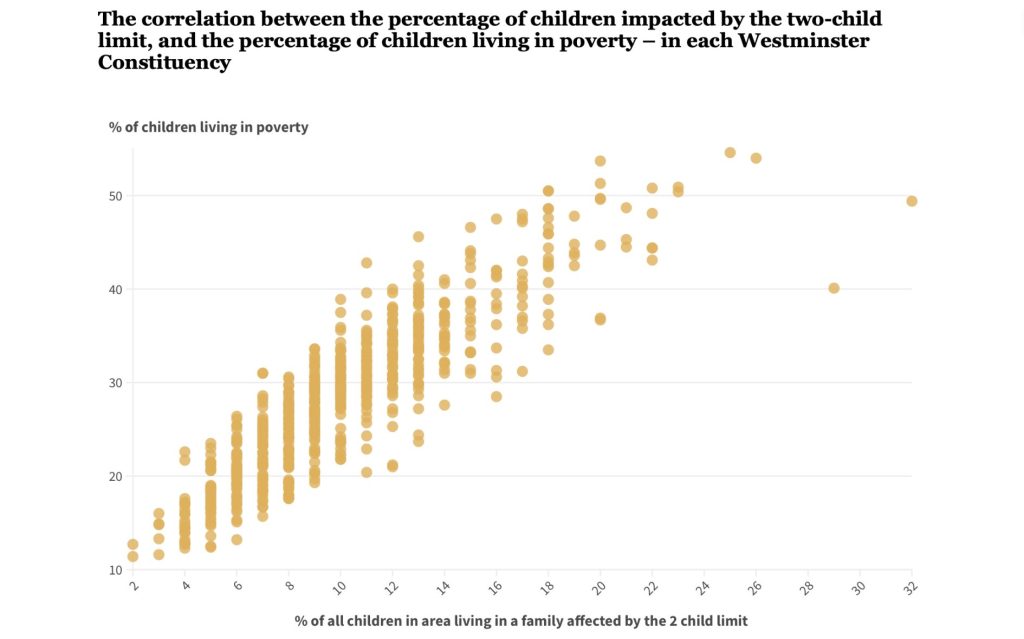
Data published by End Child Poverty shows that 428,680 UK households were impacted by the two-child limit in 2021/22, meaning they were limited in their access to Child Tax Credit and Universal Credit.
End Child Poverty figures also show that 20,570 London households were limited in their access to Child Tax Credit, and 43,260 in their access to Universal Credit, due to the two-child limit in 2021/22.
Although the West Midlands is the English region that is, overall, the most affected by the two-child limit, with 14% of children impacted by the policy, London is not far behind with 11% of children living in a family affected by the cap.
Within London, the Hackney North and Stoke Newington constituency is the most impacted by the policy, with 29% of children in the area living in a family subject to the two-child limit.
It is also an area of London that experiences particularly high rates of child poverty: 40.1% of children in this constituency live in poverty, compared to 10% on average for the UK.
Data published by End Child Poverty shows that, on average, 10.2% of children in the UK are affected by the two-child limit to benefit payments.
End Child Poverty Coalition Youth Ambassador Keira, 19, who lives in South East London and works part-time while being in Sixth Form, said: “The two-child limit is ridiculous.
“My mum raised four kids and she only had help for two of them. Why would the government punish someone for having more kids?
“There needs to be more support in place, and the policy needs to go. Period.”
Keira herself grew up in poverty and said the two-child limit is particularly unfair on children who end up directly suffering the consequences of it.
She added: “I grew up not seeing my mum because she was basically always at work trying to make enough money to pay rent and everything.
“And that’s one of the reasons why I started working when I turned 16, just to help out a little bit.”
Within London again, the Richmond upon Thames constituency is the least impacted by the two-child limit to benefit payments, with only 3% of children in the area living in a family affected by the policy.
Richmond upon Thames’ child poverty rate is 12.4% which is slightly higher than the 10% national average but far lower than Hackney and Stoke Newington’s child poverty rate.
South London appears to be less impacted by the two-child limit policy than North London, with seven of its constituencies having less than 10% of the children living in the area affected by the policy compared to three in North London despite North London counting a higher number of constituencies overall.
According to End Child Poverty, the annual cost of axing the two-child limit is £1.3 billion in 2023/24, making it the most cost-effective solution to tackle and reduce child poverty in the UK.
A DWP spokesperson said: "The two child policy asks families on benefits to make the same financial decisions as families supporting themselves solely through work. Safeguards are in place to protect people in the most vulnerable circumstances.
"There are 400,000 fewer children in absolute poverty than in 2010. But we must balance welfare support alongside fairness to the taxpayer and working families who do not see their incomes rise when they have more children."
Walters added the Child Poverty Act, which purpose was to define and implement policies aimed at eradicating child poverty across the country and to create a framework to oversee progress both at a national and local level, must be re-implemented.
The Act was enacted by Labour in 2010 before being axed by the Conservatives in 2016 with the Welfare Reform and Work Act.
Households can only access benefits for their third (or more) child if they were born before 6 April 2017 and/or are disabled, and if the family qualifies for exceptions in Child Tax Credit or in Universal Credit.
